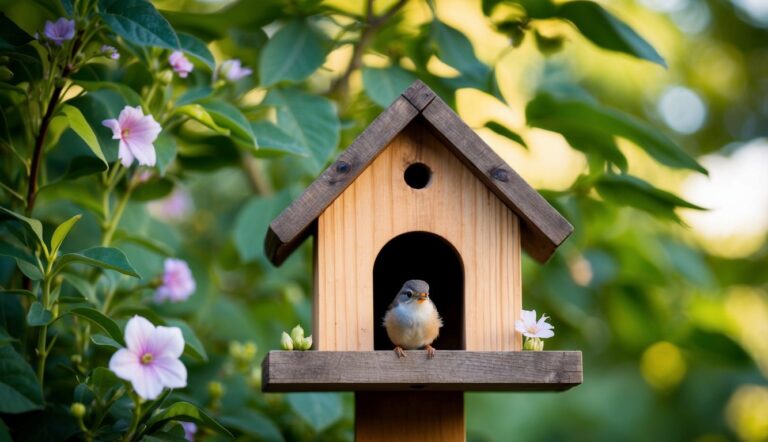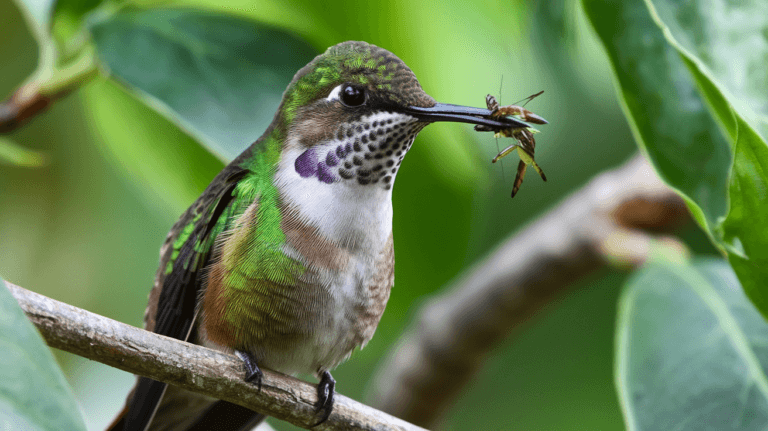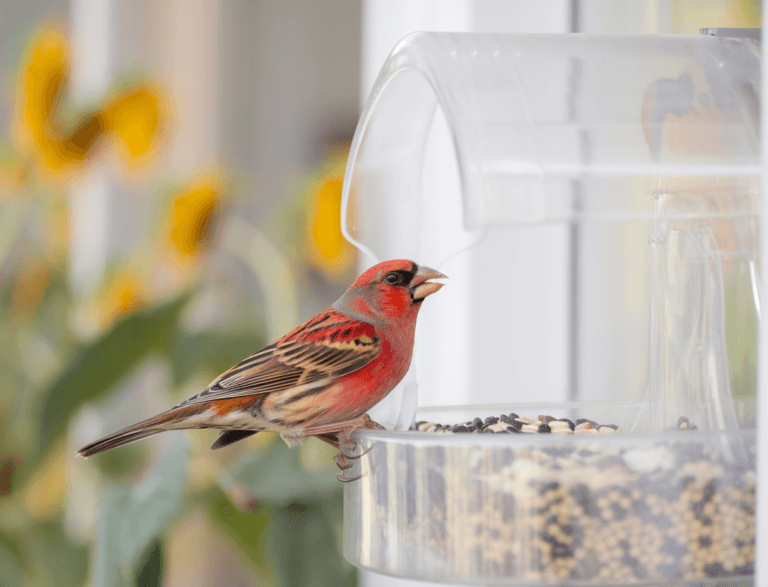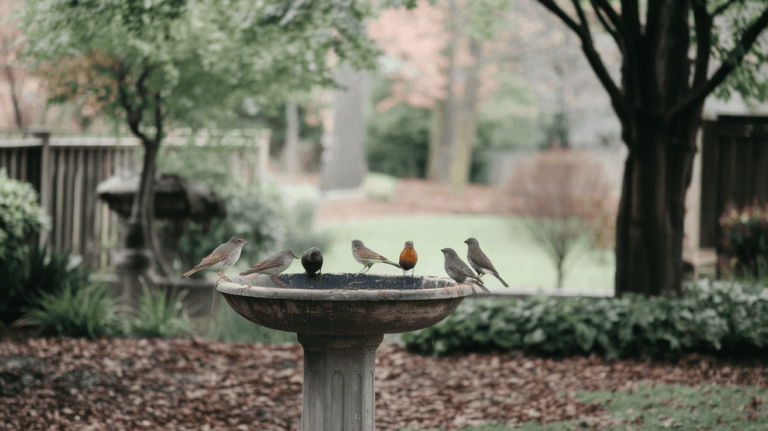10 Effective Tips to Keep Ants Away From Hummingbird Feeders

Watching hummingbirds visit your feeder brings joy to many bird lovers, but finding ants swarming your feeder can quickly ruin the experience. Ants are attracted to the sweet nectar that feeds hummingbirds, creating a common problem for bird enthusiasts.
In this guide, I will show you effective, safe methods to keep ants away from hummingbird feeders while still attracting these beautiful birds to your yard.
Jump to a Section
- Why Ants Are Attracted to Hummingbird Feeders
- 10 Effective Methods to Keep Ants Off Hummingbird Feeders
- Best Practices for Managing Hummingbird Feeders
- Natural vs. Chemical Solutions
- Final Thoughts
- FAQs
- Can ants harm hummingbirds?
- How often should I clean my hummingbird feeder to prevent ants?
- Is petroleum jelly safe to use on hummingbird feeder poles?
- What is the best ant moat for hummingbird feeders?
- Why do ants keep coming back to my hummingbird feeder even after cleaning?
- Can I add anything to my hummingbird nectar to repel ants?
Why Ants Are Attracted to Hummingbird Feeders
Ants seek out sugar sources, making hummingbird nectar an ideal food. Understanding why ants target your feeders helps solve the problem more effectively.
Natural Ant Behavior
Ants have a strong sense of smell and can detect sugar from surprising distances. Once a scout ant finds your feeder, it leaves a chemical trail for other ants to follow. This is why you’ll often see a line of ants marching to and from your feeder.
Ant colonies send out workers constantly searching for food sources. The sweet sugar water in hummingbird feeders provides an excellent energy source for the entire colony, making your feeder a prime target.
Common Entry Points
Ants typically reach feeders by:
- Climbing the pole or shepherd’s hook supporting the feeder
- Traveling along branches if the feeder hangs from a tree
- Following the wire or string used to hang the feeder
10 Effective Methods to Keep Ants Off Hummingbird Feeders
Protecting your hummingbird feeder from ants doesn’t require harmful chemicals. Here are proven methods that work while keeping hummingbirds safe.
1. Use an Ant Moat
An ant moat is one of the most effective tools to prevent ants from reaching hummingbird feeders. This simple device creates a water barrier ants cannot cross.
How to use an ant moat:
- Fill the moat with plain water
- Hang it above your feeder
- Make sure the moat stays full, especially during hot weather when water evaporates quickly
Many commercial feeders come with built-in ant moats, or you can purchase them separately. You can also make a homemade ant moat using bottle caps or small containers.
2. Apply Fishing Line
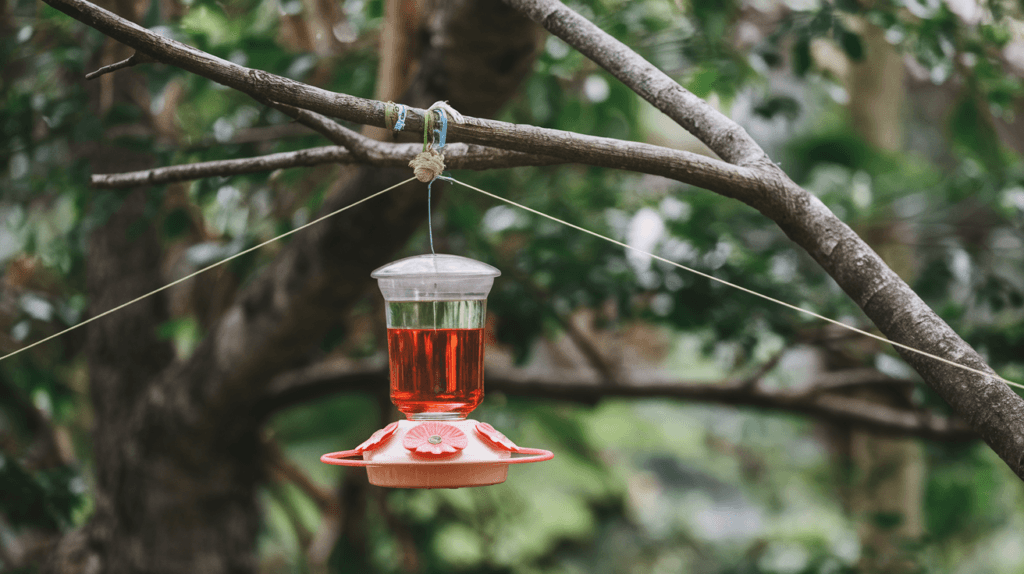
Surprisingly, ants struggle to navigate fishing line. The thin, slippery surface makes it difficult for them to maintain their grip.
To use this method:
- Hang your feeder using fishing line instead of string or wire
- Make sure the line doesn’t touch any other surfaces ants can use as bridges
This simple change can significantly reduce ant problems without using any chemicals or barriers.
3. Create Physical Barriers with Ant Guards
Commercial ant guards create physical barriers that prevent ants from reaching your feeder. These devices typically feature:
- A dome shape that blocks ants from walking around
- A smooth surface ants cannot grip
- Installation between the hanging wire and feeder
4. Apply Safe Deterrents
Several substances deter ants without harming hummingbirds:
| Deterrent | Application Method | Effectiveness | Notes |
|---|---|---|---|
| Food-grade diatomaceous earth | Apply to pole or hanging area (not on feeder) | High | Remains effective until washed away by rain |
| Mint leaves or mint oil | Place fresh leaves near (not on) feeder or apply diluted oil to hanging wire | Medium | Requires regular reapplication |
| Cinnamon | Sprinkle on hanging pole or around the base | Medium | Needs reapplication after rain |
| Bay leaves | Crush and tie to hanging wire | Medium-Low | Replace weekly |
Important: Never apply sticky substances like petroleum jelly or oils directly to feeders. These can get on hummingbirds’ feathers and cause serious problems with their flight and insulation.
5. Keep Feeders Clean and Leak-Free
A leaky feeder creates sugar trails that attract ants. Regular maintenance helps prevent ant problems:
- Check for leaks every time you refill
- Clean feeders thoroughly every 2-3 days in warm weather
- Replace worn-out parts that might cause dripping
- Wipe the outside of the feeder when refilling to remove any spilled nectar
6. Relocate Your Feeders
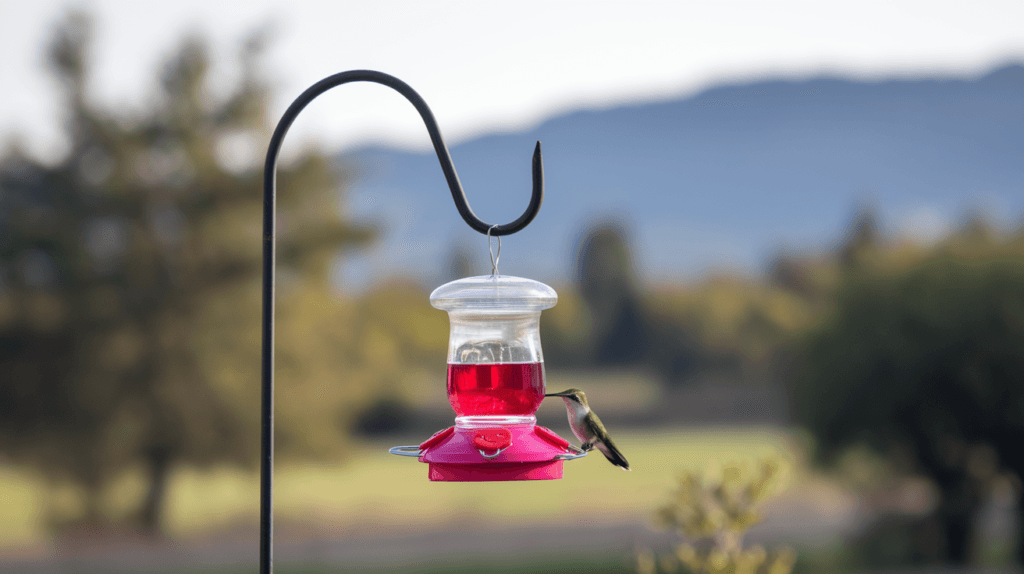
Sometimes the simplest solution is to move your feeder to a new location:
- Hang feeders from isolated poles away from trees, bushes, or structures
- Use shepherd’s hooks placed in open areas
- Move feeders if you notice ant trails forming
Hummingbirds will quickly find the new location of your feeder.
7. Use Safe Insect Repellent Plants
Certain plants naturally repel ants while attracting hummingbirds:
- Mint
- Lavender
- Marigolds
- Geraniums
- Tansy
Plant these around the area where you hang your feeders to create a natural barrier against ants.
8. Apply a Water Barrier
If you don’t have a commercial ant moat, you can create water barriers using household items:
- Cup Method: Hang your feeder from a cup partially filled with water.
- Bottle Method: Cut the bottom from a plastic bottle, thread your hanging wire through the cap, and fill the bottle section with water.
- Tray Method: Place feeder poles in shallow trays of water.
Remember to change the water every few days to prevent mosquito breeding.
9. Install Proper Nectar Guards
Nectar guards are small plastic mesh inserts that fit over feeding ports. While designed primarily to keep bees away, they also help with ant prevention by:
- Reducing nectar drips that attract ants
- Making it harder for ants to access the nectar
- Preventing larger insects from draining the feeder
These guards still allow hummingbirds to feed using their long bills.
10. Try Commercial Ant-Free Products
Several commercial products specifically address the ant problem:
- Ant-free hanging wires: Special wires designed to be difficult for ants to traverse
- Ant-repellent feeder hangers: Hangers with built-in repellent features
- Complete ant-free feeding systems: Feeders with integrated ant protection
Best Practices for Managing Hummingbird Feeders
These general practices will help keep your feeders ant-free:
Proper Feeder Placement
Where you place your feeder matters:
- Hang in shady areas to slow nectar fermentation
- Keep away from flat surfaces ants can use as bridges
- Position away from established ant colonies
- Avoid hanging directly from house eaves where ants may already travel
Regular Maintenance Schedule
Consistent maintenance is key to preventing ant problems:
- Empty, clean, and refill feeders every 2-3 days in hot weather
- Check ant moats daily during summer to ensure they contain water
- Wipe down the outside of feeders regularly
- Inspect hanging wires or strings for ant activity
- Rinse and refill water barriers frequently
Seasonal Adjustments
Ant pressure changes throughout the year:
- Spring: Begin with preventative measures as ants become active
- Summer: Increase cleaning frequency and check water barriers daily
- Fall: Continue protection as ants actively gather food for winter
- Winter: In warmer regions, maintain basic preventions even during cooler months
Natural vs. Chemical Solutions
When dealing with ants, natural solutions are always preferable for protecting hummingbirds.
Safe Options for Hummingbirds
These options pose no risk to hummingbirds:
- Water barriers
- Physical blockers
- Plant-based deterrents
- Repositioning feeders
- Fishing line method
What to Avoid
Never use these methods near hummingbird feeders:
- Insecticides or pesticides
- Sticky traps or adhesives
- Petroleum jelly on poles or wires
- Strong essential oils applied directly to feeders
- Bleach or harsh chemicals for cleaning (residue can harm birds)
Final Thoughts
Keeping ants away from hummingbird feeders requires a combination of proper placement, regular maintenance, and appropriate barriers. By using the methods outlined in this guide, you can enjoy watching hummingbirds without the frustration of ant invasions.
Remember that consistent attention to your feeders is the most important factor in preventing ant problems. Check your feeders daily, keep them clean, and address ant issues as soon as you notice them. With these practices, you’ll create a welcoming space for hummingbirds while keeping ants at bay.
FAQs
Can ants harm hummingbirds?
Ants typically don’t harm hummingbirds directly. However, they can contaminate the nectar, making it less appealing to hummingbirds. When ants infest a feeder in large numbers, hummingbirds often avoid it completely.
This means your feathered visitors might stop coming to your yard if ant problems persist. Some ant species can also bite humans who handle the feeders, making maintenance unpleasant.
How often should I clean my hummingbird feeder to prevent ants?
You should clean your hummingbird feeder every 2-3 days during hot weather (above 80°F/27°C) and every 4-5 days in cooler weather. Regular cleaning prevents sugar fermentation and reduces nectar leaks that attract ants.
Empty the feeder completely, rinse with hot water, and use a bottle brush to clean feeding ports where sugar residue often accumulates. Avoid using soap unless necessary, and if used, rinse thoroughly to remove all residue.
Is petroleum jelly safe to use on hummingbird feeder poles?
No, petroleum jelly (Vaseline) is not safe to use on or near hummingbird feeders. While it effectively stops ants, it poses serious risks to hummingbirds.
If birds come into contact with petroleum jelly, it can get on their feathers, damaging their waterproofing and insulation properties.
This can lead to hypothermia and affect their ability to fly properly. Always use ant moats or other bird-safe barriers instead of sticky substances.
What is the best ant moat for hummingbird feeders?
The best ant moats are those that hold enough water to create a barrier but are easy to refill and clean. Look for moats with these features: durable materials like hard plastic or metal that won’t crack in sunlight, capacity to hold water for at least 1-2 days before evaporation, and easy attachment to existing feeders.
Many birders prefer moats with transparent bottoms so you can easily see when water levels are low.
Popular brands include Aspects, First Nature, and Perky-Pet, though homemade solutions using bottle caps or small containers can work just as effectively.
Why do ants keep coming back to my hummingbird feeder even after cleaning?
Ants may return to your feeder even after cleaning because they follow established scent trails. When scout ants find food, they leave chemical markers that other ants can detect for days afterward.
To break this cycle, clean not just the feeder but also wipe down the hanging wire, pole, or hook with a vinegar solution (1 part vinegar to 3 parts water). This removes the chemical trail.
Also check for hidden leaks in your feeder that might be creating new sugar trails, and make sure your ant moat or barrier is functioning properly.
Can I add anything to my hummingbird nectar to repel ants?
No, you should never add anything to hummingbird nectar except sugar and water. Additives like vinegar, essential oils, or commercial insect repellents can harm hummingbirds, even in small amounts.
The safest nectar recipe is 1 part white granulated sugar to 4 parts water, with no additional ingredients.
Instead of modifying the nectar, use external ant deterrents like ant moats, physical barriers, or relocating the feeder. This keeps the nectar safe for hummingbirds while preventing ant problems.
- 24 Popular Backyard Birds In New Hampshire (With Pictures!) - March 24, 2025
- How to Attract Birds to a Window Feeder? (6 Expert Tips) - March 16, 2025
- How to Provide Water for Birds in Summer? (4 Easy Ways) - March 16, 2025

